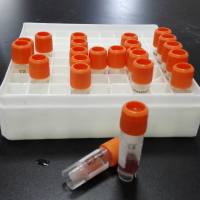Treatment of patients before and after liver transplantation diagnosed with chronic hepatitis B virus (HBV) infection represents a special model of treatment with antiviral therapy that has important implications for individuals involved in drug development and designing clinical trials. The high rate of graft infection and early graft failure shortly after orthotopic liver transplantation (OLT), as well as frequent patient death, led to restricted use or abandonment in the early 1990s of OLT for chronic hepatitis B virus (HBV). Marked improvements in long-term survival in the mid-1990s resulted from the use of low-dose immunosuppressive therapy and administration first of short-term and then of long-term (indefinite) hepatitis B immune globulin (HBIG) after OLT with the subsequent introduction of nucleoside therapy both before and after OLT (Fig. 1 ) (
1 –
15 ). Graft infection is proportional to the serum level of HBV DNA (replication), type of liver failure (fulminant versus chronic) and presence of hepatitis delta virus (HDV) infection before transplantation (Fig. 2 ). Also, for maximum efficacy, HBIG injections require a strict compliance with measurable serum titers of anti-HBs. It is important to recognize not only that HBIG is a polyclonal antibody preparation initially derived from blood donors who have been exposed to and cleared HBV infection, but also that HBIG was designed to prevent
de novo infection in individuals exposed to HBV in high-risk settings. In the case of liver transplantation, HBIG binds circulating virus and presumably prevents infection of the hepatocytes in the new graft and may prevent interhepatocyte viral transfer as well.
Fig. 1. Survival of patients treated without and with hepatitis B immune globulin (HBIG) therapy after liver transplantation. (Adapted from ref. 10 .)
Fig. 2. Risk of recurrence of hepatitis B virus (HBV) after liver transplantation depending on viral status before transplant. HDV, Hepatitis D virus; HBeAg, hepatitis B envelope antigen, (+), positive; (−), negative. (Adapted from ref. 10 .)






